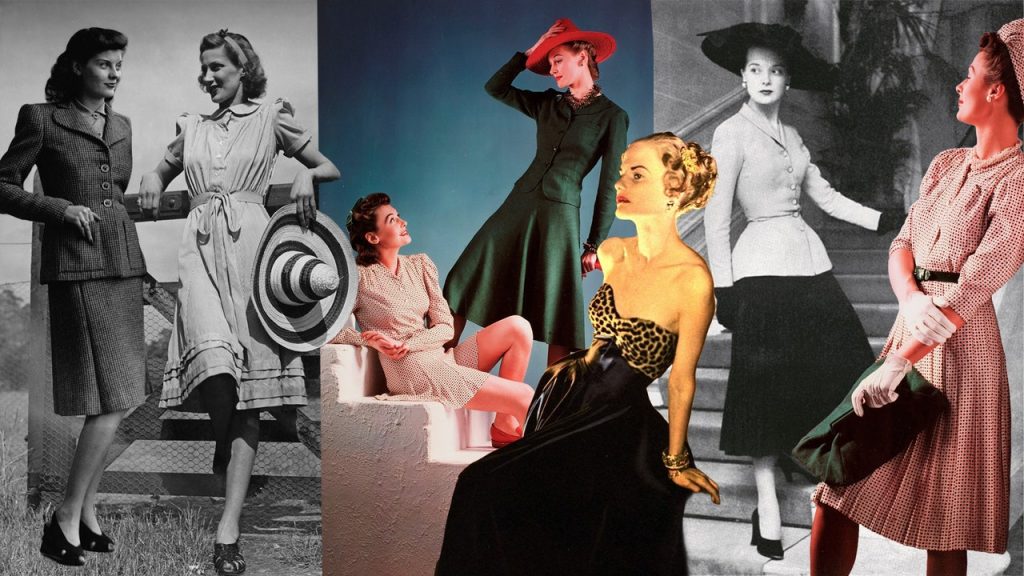The fashion industry during the 1940s saw many changes and innovations in response to wartime restrictions and the influence of Hollywood. Shoes of the era were sturdy, with rounded toes and substantial heels. Due to a shortage of leather, alternative materials like cork and espadrilles became popular. Vogue highlighted “Unrationed Raffia Shoes” in 1944, emphasizing freedom from rationing. Unexpected materials continued to appear in fashion, such as the curved bamboo-handle bag introduced by Guccio Gucci in 1947. The era saw a shift in American designers rising in prominence, as Parisian influence waned after the fall of Paris. Designers like Norman Norell, Bonnie Cashin, and Claire McCardell pioneered American sportswear, creating practical yet stylish garments.
During the 1940s, Hollywood played a significant role in setting fashion trends through films like A Philadelphia Story and The Big Sleep. Screen sirens like Rita Hayworth, Lauren Bacall, and Katharine Hepburn showcased clothing designed by notable costume designers such as Gilbert Adrian and Edith Head. Hepburn, in particular, made a statement by wearing a tuxedo in the film Woman of the Year in 1942, challenging conventional gender norms. Parisian fashion designers, who had been stifled during the German Occupation, made a triumphant return postwar with the “Théâtre de la Mode” exhibition. Led by Lucien Lelong, 40 couturiers collaborated to showcase miniature doll-sized outfits that traveled the world, offering a glimpse of postwar Parisian fashion.
In the United States, the absence of Parisian influence led to the rise of American designers who looked inward for inspiration. Norman Norell, Bonnie Cashin, and Claire McCardell were among the designers who made significant contributions to American fashion during the 1940s. McCardell’s “Pop-over” dress, originally introduced as a Utility garment, symbolized the beginning of American sportswear with its practical yet stylish design. Hollywood continued to be a major influence on fashion trends, with iconic actresses like Katharine Hepburn breaking barriers by wearing pants on screen. Hepburn’s bold fashion choices in films like Woman of the Year helped to redefine women’s fashion.
The 1940s marked a time of innovation and creativity in the fashion industry, with designers pushing the boundaries of traditional styles and materials. The era saw the introduction of alternative materials like cork and raffia due to wartime shortages, as well as the rise of American designers as Parisian influence waned. Hollywood played a key role in shaping fashion trends, with actors like Katharine Hepburn challenging gender norms through their on-screen attire. The postwar period saw a resurgence of Parisian fashion with the “Théâtre de la Mode” exhibition, showcasing the creativity and resilience of Parisian designers. Overall, the 1940s were a transformative period in fashion history, characterized by innovation, creativity, and changing societal norms.


